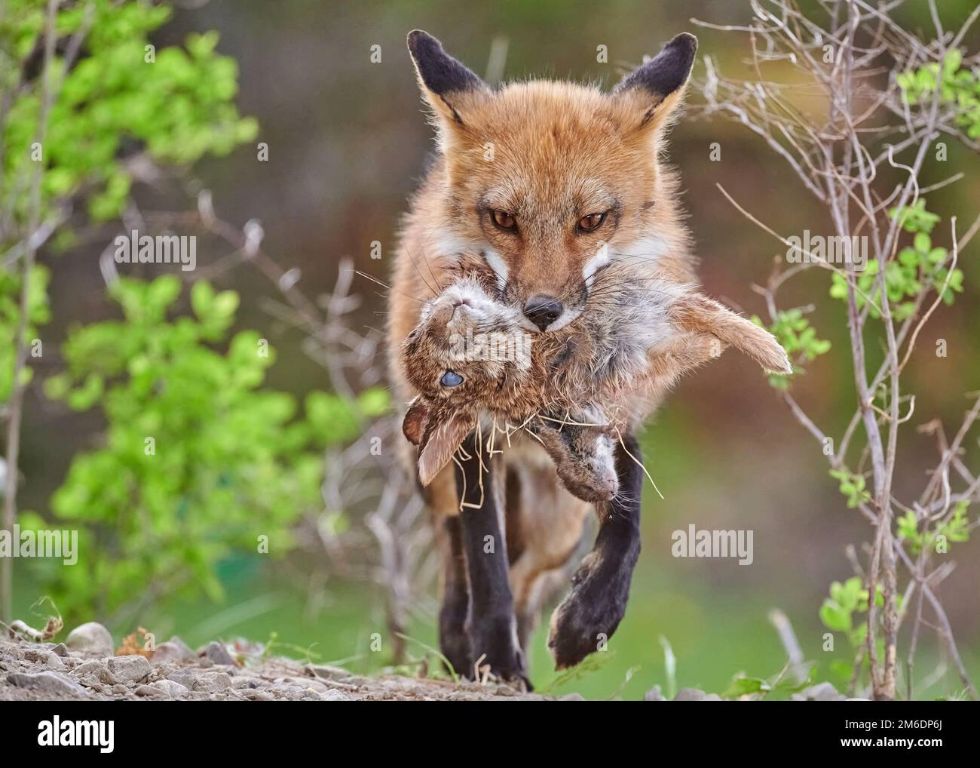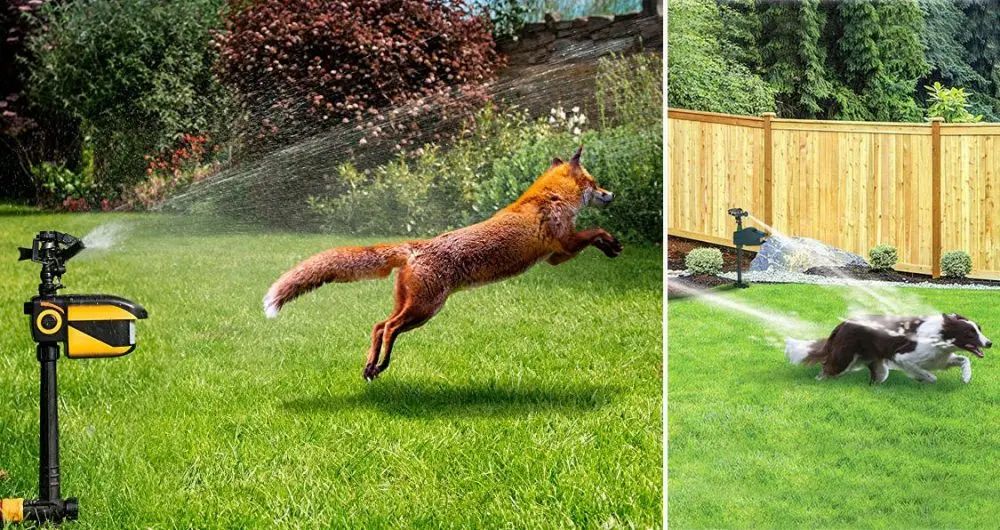Introduction
The question of whether a fox will attack a small dog is one that many pet owners have, especially those who live in areas with large fox populations. On the whole, fox attacks on dogs are rare, but they are possible under certain circumstances. Small dogs, due to their size, can be more vulnerable to foxes than larger breeds. While a healthy fox is unlikely to attack a dog unprovoked, factors like territoriality, hunger, and disease can influence a fox’s behavior and lead them to target small dogs as prey. This overview will examine the typical behavior of foxes, look at when they are most likely to go after dogs, provide tips to prevent attacks, and give guidance on how to respond should a fox attack occur.
Fox Behavior
Foxes are highly territorial animals that mark their range boundaries with feces and urine scent marks. According to the Victorian Department of Agriculture, foxes display territorial behaviors such as confrontation and vocalizations [1]. Foxes will aggressively defend their territory against intruding foxes. When two foxes confront each other at a territory boundary, they will stand on their hind legs with forefeet on each other’s shoulders, heads tilted back, and mouths open in a bluffing ritual. Actual fighting is rare as submitting foxes will back down from the dominant animal [2].
Foxes are opportunistic predators and will hunt any small animals they can catch, including rodents, rabbits, birds, and other small wildlife. They hunt primarily at night by odor, sound, and vision. Foxes will roam great distances in search of food, as much as 12 miles in one night. They have extremely good hearing and can locate small animals moving underground. Foxes stalk and pounce on their prey in a cat-like manner [3].
Common Fox Species
The two most common species of fox found in many parts of the world are the red fox (Vulpes vulpes) and the gray fox (Urocyon cinereoargenteus). Both species exhibit some differences in their typical behaviors.
Red foxes are the more widespread and well-known species. They are sly, opportunistic hunters and scavengers. Red foxes are nimble and fast runners capable of reaching speeds of up to 26 mph. They use their excellent sense of hearing to locate small prey like rabbits, rodents, birds, and even fish. Red foxes will also readily eat carrion and food waste provided by humans. They are solitary hunters and typically hunt alone. Red foxes make a wide variety of vocalizations including sharp barks, screeches, and howls. They are comfortable living in a range of habitats from forests to farmland. https://agriculture.vic.gov.au/biosecurity/pest-animals/priority-pest-animals/red-fox
Gray foxes are slightly smaller and leaner than red foxes. They are adept climbers and can climb trees to escape predators or access food sources like fruits or bird eggs. Gray foxes primarily eat small mammals like mice, voles, shrews, and rabbits. They are nocturnal and do most of their hunting at night. Gray foxes can rotate their hind feet allowing them to descend trees headfirst. They make dog-like barking noises for communication. Compared to red foxes, gray foxes prefer more densely vegetated habitats like deciduous forests and thick brush. They also have stronger site fidelity, occupying the same home range for multiple years. https://www.countryfile.com/wildlife/mammals/fox-guide-behaviour-mating-diet-identification
Small Dog Breeds at Risk
Certain small dog breeds may be more vulnerable to fox attacks because they resemble the size and shape of typical fox prey like rabbits, squirrels, and other small mammals. Foxes have sharp teeth and strong jaws evolved for hunting, killing, and eating small prey animals.

Some examples of small dogs that may appear similar to fox prey include:
- Chihuahuas
- Yorkshire Terriers
- Maltese
- Pomeranians
- Toy Poodles
- Papillons
In general, dogs under 15 pounds are within the size range that foxes may perceive as prey. Even if a small dog is not normally isolated outside, just being let out briefly to relive itself could make it vulnerable to a fox attack.
Owners of tiny dogs should take extra precautions when their pets are outdoors. It’s best to stay with small dogs when they go outside and keep them leashed. High fences may also help deter foxes from easily entering a yard.
Protecting Small Dogs
There are several steps small dog owners can take to protect their pets from potential fox attacks. Supervision is key – don’t leave small dogs unattended, especially at dawn and dusk when foxes are most active. Keep small dogs on a leash when outside and be vigilant in watching for foxes that may be lurking nearby.
Securing your yard with fencing and making sure doors are shut can also prevent fox encounters. Foxes can easily jump or dig under fences less than 6 feet tall, so taller fencing is ideal for yards housing small dogs. Electronic fencing may also deter foxes from entering a yard. Keep dogs inside if foxes are known to be active in the area.

Deterrents like motion-activated lights, sprinklers, and noise devices may also help scare foxes away from a property. Spraying ammonia or vinegar around the perimeter of a yard creates an unpleasant odor that repels foxes. Removing food sources like fallen fruit, pet food, and unsecured trash reduces the appeal of a yard to hungry foxes as well.
For further protection, the PA Game Commission suggests acting aggressively by shouting, waving arms, or throwing objects to reinforce a threat if a fox approaches while a small dog is outside. Physical confrontation is not recommended, but making loud noises and acting assertively may scare the fox away. Seeking immediate veterinary care is vital if a small dog is bitten or scratched. How to protect pets from foxes in Pennsylvania
Fox Attack Signs
There are a few key signs that may indicate a fox attack has occurred, especially involving small dogs. According to the Humane Society, wounds on the neck and throat area are common in fox attacks on pets [1]. Other signs include bite marks on the legs or body, as well as claw marks. Missing pets may also be an indicator that a fox was involved.
Increased fox sightings in the neighborhood can signal heightened fox activity and potential risk. According to Critter Control, spikes in fox populations often lead to more encounters with pets [2]. If foxes are frequently seen, especially during daytime hours, it’s wise to take precautions with small dogs when outside.
While healthy foxes tend to avoid confrontation, those infected with rabies are much more likely to exhibit unprovoked aggression. Areas with recent rabies outbreaks in fox populations present a greater danger of fox attacks on pets.
If a Fox Attacks
If a fox does attack your small dog, it’s important to respond quickly to protect both yourself and your dog. According to the Human Society, if a fox bites your dog, take your dog to the vet immediately for an exam and to assess if vaccination is needed [1]. Also contact animal control or wildlife authorities to assess and handle the situation with the fox [2].

To protect yourself and your dog in the moment, make loud noises and big gestures to startle the fox – do not run or turn your back. Pick up small dogs to keep them out of reach. Spray the fox with water or a repellent like ammonia if one is available. Be ready to fight the fox off with sticks, rocks, or your hands if absolutely necessary. Seek medical attention for any wounds.
Most fox attacks are defensive when they feel cornered or threatened. So remain calm and back away slowly if possible. Do not make sudden moves and give the fox room to retreat. Avoid prolonged direct eye contact, which can seem like a challenge to foxes. Stay together with your dog on a leash so they cannot run after the fox.
After an Attack
If a fox does attack and bite your dog, it’s crucial to seek immediate medical attention for the wound. Thoroughly wash the bite with soap and water and take your dog to the vet right away. Prompt medical care will help prevent potential infections, including rabies. According to the Humane Society, “Thoroughly wash the wound with soap and water and seek immediate medical attention. Prompt medical care will prevent a rabies infection. Be sure to report the incident to animal control” (https://www.humanesociety.org/resources/what-do-about-foxes).
At the vet, they will likely clean the wound again, apply antiseptic, and dress it with gauze and tape. The vet will also likely prescribe antibiotics to prevent infection. It’s crucial to follow up with the full course of treatment as prescribed by your vet. According to one Quora user, “wash any scratches or bites, put antiseptic on them… Your vet will most likely give you a prescription of antibiotics” (https://www.quora.com/What-can-I-do-if-a-fox-attacks-my-dog).
You should also report the fox attack to animal control so they can monitor fox activity in the area. Provide details on where and when the attack occurred. Animal control may decide to trap and relocate problematic foxes showing aggressive behavior towards pets.
Preventing Future Attacks
The most effective way to prevent fox attacks on small dogs is to remove any food sources that might attract foxes and use exclusionary devices to keep foxes away from your property. According to wildlifehelp.org, you should not leave pet food outside, clean up fallen bird seed, and secure the lids on trash cans and compost bins. Fruit should also be picked up from the ground. Installing a predator-proof kennel or fence for your small dogs will provide important protection.

Exclusionary devices like motion-activated sprinklers, lights, or sounds can help deter foxes. Strong smells like ammonia or predator urine applied around your yard are also recommended. Trimming back bushes and blocking access under decks and sheds removes potential den sites. It’s also important to monitor your small dogs when outside, especially at dawn and dusk when foxes are most active. Keeping dogs on a leash gives you better control over encounters. With preventative measures, you can help avoid traumatic fox attacks on beloved small dog companions.
Conclusion
Foxes are generally shy and elusive animals that prefer to avoid confrontation. However, under the right circumstances they may attack a small dog, especially if they feel threatened or are protecting their territory or their young. Small terrier breeds like Yorkshire Terriers, Chihuahuas, and Pomeranians are most at risk due to their small size.
To protect small dogs, supervise them when outside, especially at dawn and dusk when foxes are most active. Make sure your yard is secure with no holes where foxes can enter. Keep dogs on a leash when walking. If you encounter a fox, pick up small dogs and back away calmly. Remove any pet food or garbage that could attract foxes to your property.
If a fox does attack, make loud noises to scare it off. Seek immediate veterinary care for any injuries. Report aggressive foxes to animal control. With proper precautions, small dog owners can minimize the risks of fox encounters.
The key is vigilance, prevention, and quick action if confronted by a fox. By understanding fox behavior patterns and vulnerabilities of small dogs, owners can take steps to protect their beloved pets.